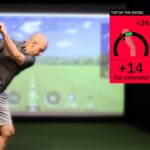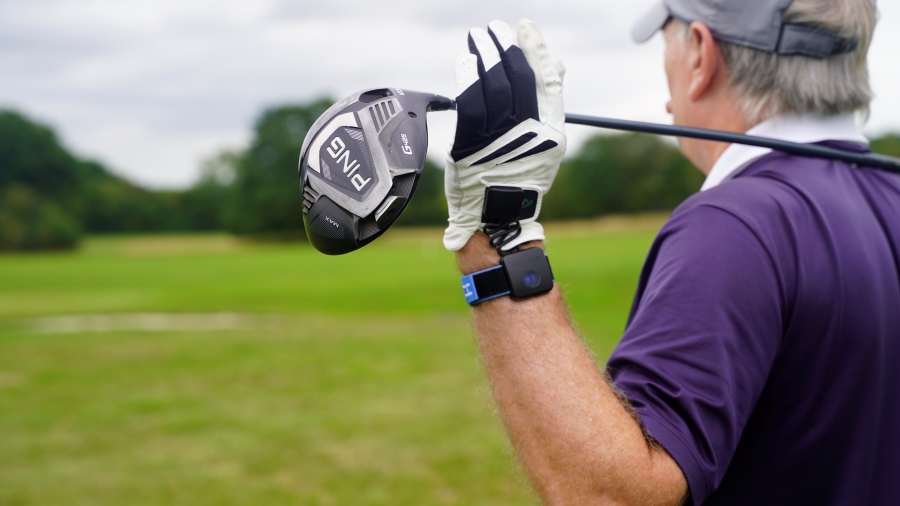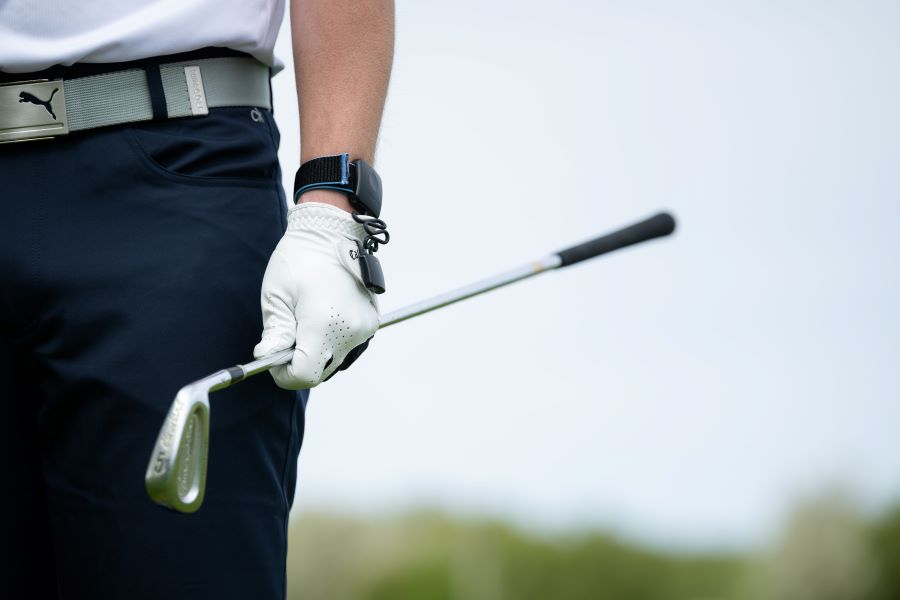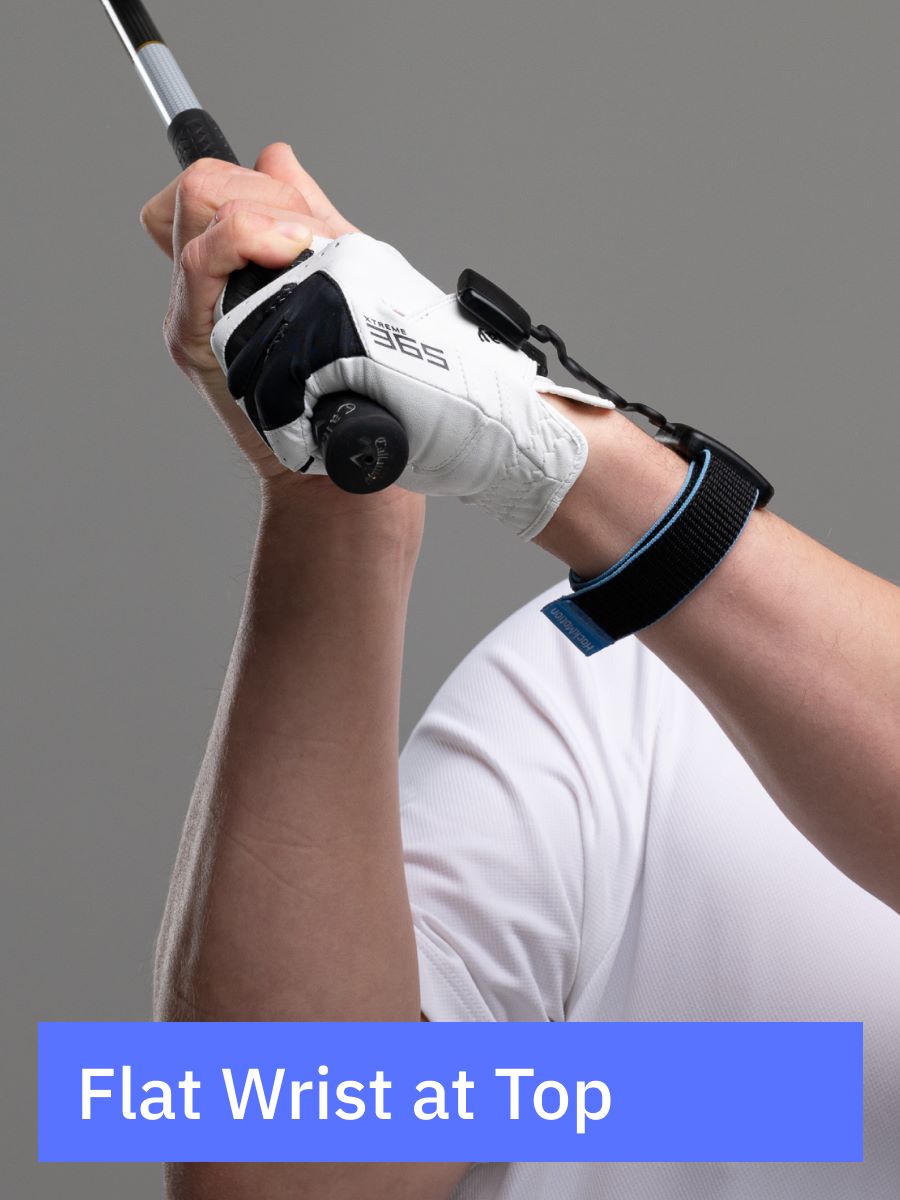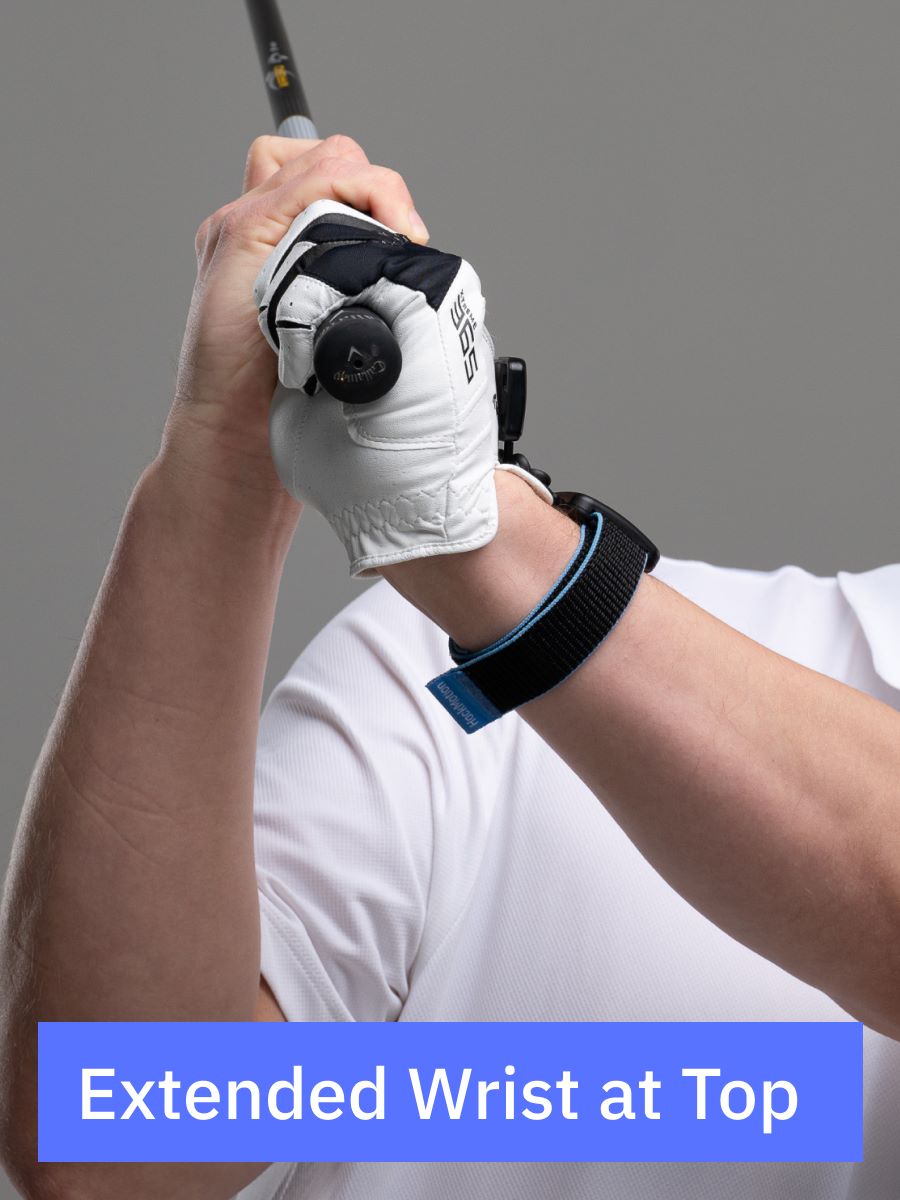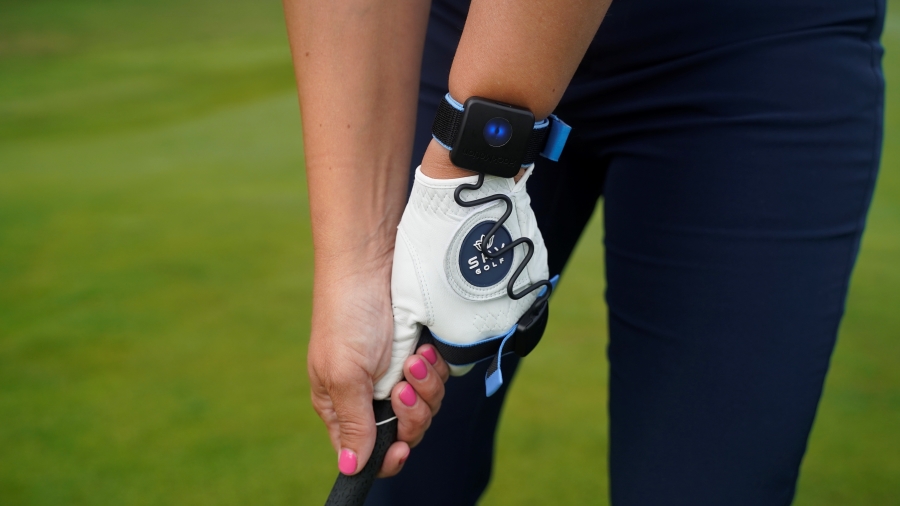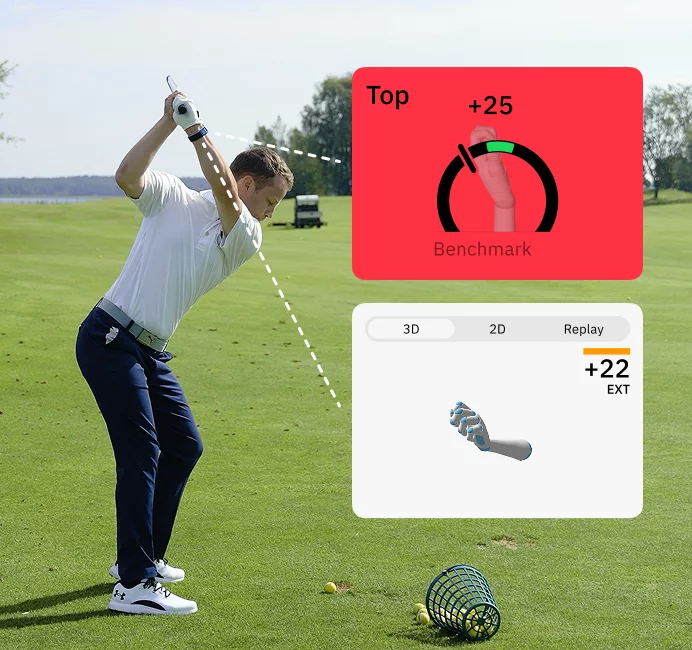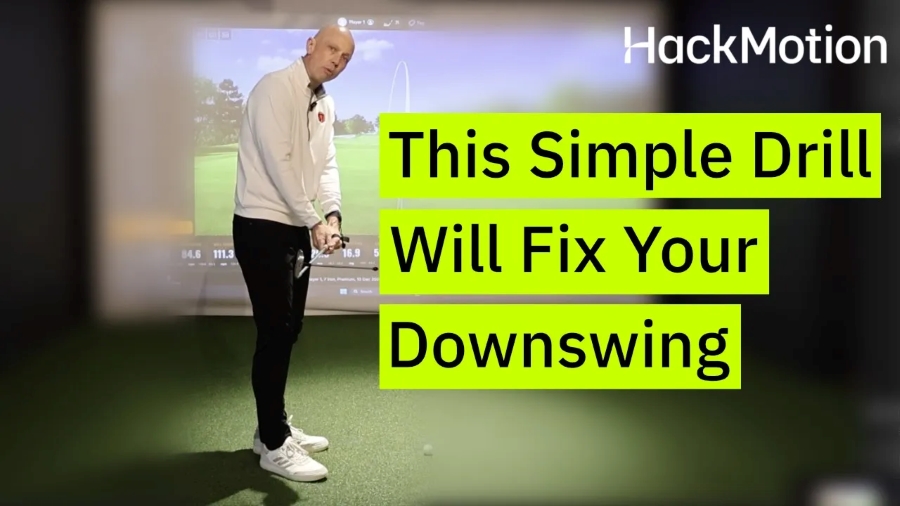Flat Left Wrist in Golf Swing: Consistency Starts with Your Lead Wrist
After analyzing more than 1,000,000 golf swings, there is one fact that we absolutely cannot deny: a flat left wrist position at the top of the backswing and again at impact is beneficial.
Golfers who hit consistently straight and long golf shots are able to achieve this wrist position and square their clubface.
We will explain why a flat left wrist in golf is so important and how you can use drills and exercises to achieve it.
Flat Lead Wrist in Golf (Key Takeaways)
Here are the basics of the flat lead wrist and why it’s crucial for squaring up your clubface:
- Golfers who struggle with a cupped wrist often experience open clubfaces, ballooning ball flights, and weak contact.
- Your wrist position at setup influences your ability to achieve a flat left wrist during the swing. A neutral grip increases your chances of success.
- A flat lead wrist at the top of the backswing is essential for consistent ball striking and better wrist control through impact. Great players add lead wrist flexion on the downswing to achieve a square clubface at impact.
- A flat or slightly flexed left wrist leads to more distance, a penetrating ball flight, and straighter shots.
- HackMotion provides real-time feedback, drills, and data, helping you measure, analyze, and improve your wrist position like a professional coach on the range.
Contents
Wrist Positions in Golf Swing: Quick Overview
Before fixing your flat lead wrist, it’s important to review how the wrists work in the golf swing.
You must know three wrist motions: extension/flexion, radial deviation/ulnar deviation, and rotation.

Wrist flexion and extension are the most important things to know, feel, and understand to achieve a flat left wrist.
If you want to learn more, check out our complete guide on wrist action in the golf swing.
| Wrist Motion | Description | Impact |
|---|---|---|
| Extension/Flexion | Bowing and cupping of the wrist. | Controls opening/closing of the clubface. Affects ball flight and spin. |
| Radial/Ulnar Deviation | Cocking and uncocking of the wrist. | Impacts power and control. |
| Rotation | Pronation/supination of the wrist. | Impacts clubface alignment and swing path. |
What’s the Importance of a Flat Left Wrist in Golf Swing?
Let’s say you have been playing golf your entire life; you shoot around 95-100, and you know your lead wrist is anything but flat during the golf swing. What’s in it for you to change to the flatter left wrist?
If you flatten your lead wrist, you’ll notice the following:
- Square clubface at impact, resulting in straighter, more consistent shots.
- Increased compression for a penetrating ball flight and more distance.
- Reduced dispersion with fewer fat/thin shots and improved accuracy.
- Faster swing speed with more power and control at impact.
How to Flatten Your Left Wrist?
To flatten your left wrist in your golf swing it’s best to break the swing down into pieces.
Some players have a good setup but then struggle with the top of the backswing. Here is how to flatten your left wrist in each part of your swing.
1. Setup Check
Each player has a different way of holding the club. There are neutral, weak, and strong grips, and the grip type affects whether you should aim for a flat left wrist throughout the swing or if a slightly flexed or extended wrist is better.
- For stronger grips, the lead wrist naturally tends to be more cupped (extended).
- For weaker grips, it is more bowed (flexed).
- A neutral grip is generally a good goal for golfers looking to maintain a flat lead wrist throughout their swing.
To check if your grip is neutral, look down at your left hand at address. If you see 2-3 knuckles, your grip is neutral, and you are on the right track for creating a flat wrist in the swing.
2. Flatten the Wrist During the Backswing
A common mistake by many golfers is increasing lead wrist cupping during the backswing.
This additional extension in the left wrist makes it difficult to get the wrist flat and square the club at impact.
Moving toward a flatter left wrist at the top is the best option, and the HackMotion static top drill is a great way to achieve that.
You’ll take a backswing and stop at the top to check position. HackMotion alerts you if your wrist is too extended or too flexed.
Static Top Drill in HackMotion
By working on the Static Top Drill, you can create muscle memory and achieve a flat lead wrist at the top of the backswing.
Static Top Drill – Step by Step
- Swing to the top of your backswing and pause.
- Use HackMotion to check your wrist position (green = flat/flexed; red = extended).
- Adjust your wrist until it’s flat, then return to the address position.
- Repeat 10 times to build muscle memory.
- Start taking full swings/hitting shots and see if you can achieve this position each time.
3. Keep the Lead Wrist Flat in the Downswing
The downswing is crucial because it’s where you pick up power.
If your lead wrist is not flat on the downswing, you’ll waste some of your time and energy trying to square the clubface.
Even if you have a bit of extension at the top of your backswing, you can fix this during transition with the Motorcycle Drill.
The Motorcycle Drill has you make a motion of revving a motorcycle throttle at the top of your backswing. This “revving” motion decreases wrist extension in the downswing.
While you can work on this without using HackMotion, the immediate feedback you get while wearing the wrist sensor can speed up learning.
Motorcycle Drill – Master Wrist Flexion in the Downswing
Focus on continuously adding flexion until the club reaches parallel, then smoothly complete your swing.
Motorcycle Drill – Step by Step
- At the top of your backswing, “rev” your lead wrist like twisting a motorcycle throttle.
- Focus on reducing wrist extension as you transition to the downswing.
- Use HackMotion to monitor your wrist angles in real time.
- Repeat until the movement feels natural.
4. Flatten the Wrist at Impact
At impact, the lead wrist should be flatter than at setup, ensuring the hands are ahead of the clubhead for optimal ball compression and shaft lean.
If you are getting close to the lead wrist being flat at the top of your backswing and during transition, you’ll have much less work to do through impact.
The HackMotion Release Drill is the perfect way to fix your lead wrist position at impact.
You may have heard of this as the 9 to 3 drill. The goal is to take the club back so it’s parallel to the ground and then swing through until the club is parallel to the ground on the other side.
Perfect Your Release with HackMotion
Fine-tune your release for consistent contact. Start with a short swing to master control before adding power.
HackMotion Release Drill – Step by Step
- Address the ball, then swing back to the point where the club is parallel to the ground.
- Ensure your lead wrist position has not increased in extension.
- Swing through to club parallel while maintaining a flat or slightly flexed lead wrist position.
- Check to make sure your impact position is correct.
- Making shorter swings can help you get your mechanics down and then you gradually increase swing length to add power and increase distance.
Key Lead Wrist Checkpoints in the Swing
It’s difficult to know if you are in the correct position without properly measuring your wrist extension and flexion.
This is where HackMotion becomes a game-changer, offering real-time feedback on wrist movement throughout your swing.
Remember:
It’s not about focusing on the absolute wrist angle values at specific positions, but rather on their relative numbers compared to the address position.
Read more here about how HackMotion target ranges are calculated and the principles behind them.
Here’s a general guideline for your lead wrist positions:
- Setup: Begin with a slight bend (extension) in your lead wrist. This typically ranges from 5° to 20°, depending on grip and setup.
- Takeaway (Shaft Parallel): Move the wrist toward a flatter or slightly flexed position.
- Top of Backswing: Maintain a generally flat (0°) or slightly flexed wrist. Avoiding any additional “cupping” beyond what you started with.
- Transition: Wrist remains stable, avoiding unnecessary cupping or extension. (Try Motorcycle Drill if you struggle with transition).
- Impact: Move the lead wrist into a more flexed position to promote forward shaft lean and solid contact. The goal is to see a significant decrease in extension from your setup.
- Follow-Through: Continue that flexed feeling briefly past impact to stabilize the clubface.
Final Thoughts
At this point, you have all the information you need to start working on your flat lead wrist. HackMotion allows you to make big changes in wrist position in a very short period of time.
Remember, getting into the proper range of wrist angles is what matters most.
There is no single perfect wrist position; instead, you need to follow the patterns identified from the best players in the world.
Ready to improve your game? Explore HackMotion now and see the difference it can make!



